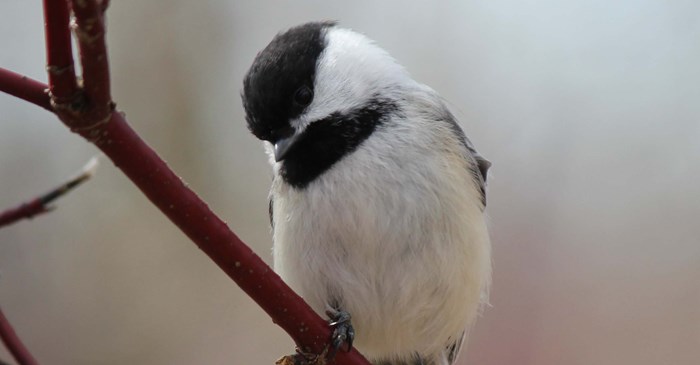It’s pretty common to see water birds asleep on the shore, and if you’re out and about, you might catch sight of an owl snoozing in a tree. However, the ideal spot for a songbird to sleep is out of sight, above ground level, concealed by branches, twigs and foliage. It’s one way to protect themselves from predators, and in the colder winter months, such sheltered places also lend some weather protection.
In the winter, cardinals, Blue Jays and finches will roost in dense evergreens, using their body heat to keep warm. Some finch species, especially the Common Redpoll, may tunnel into the snow. Woodpeckers and chickadees, however, will sleep in small tree cavities for warmth and protection. Birds may also find haven in man-made structures, like chimneys and nesting boxes.
What about nests, though?
These structures are often thought of as a bird’s home base. However, nests are used solely for housing eggs and chicks — not as a place to sleep at night. Once the chicks have left, it’s unlikely the nest would be reused.
Specialized Sleepers
When you look at the ways in which birds slumber, they have a couple of other interesting abilities that are not shared by humans. Their feet can cling all night to a branch without relaxing. When they put their body weight on their feet, it triggers the flexor tendon, which makes the foot curl. Clinging is a very natural and unconscious thing for a bird.
They also have the ability to sleep in this state that is both awake (and aware of surroundings) and asleep. Perhaps you’ve passed a sleeping duck, but he has one eye open. He may be in a state called unihemispheric slow-wave sleep. This is when one area of the brain is in a state of deep sleep, but another area of the brain is still taking in information about their surroundings. So if a predator or some other threat appears, they have a chance to wake and fly to safety.
Lending a hand
During the winter, you can help the birds by offering shelter that lets them sleep in a warmer spot. Small wicker baskets called roosting pockets can be hung from the tree branches, letting them huddle with a fellow bird or two away from the elements. Or if you have a nesting box, consider leaving it outside all winter. Just seal up the vents near the roof with electrical tape and add some grasses.
In addition to shelter, keeping those feeders filled through the winter is a great way to supplement their diets. Lyric Fruit & Nut Mix has peanuts, cranberries, raisins, almonds and other high-energy nuggets to feed the birds.
